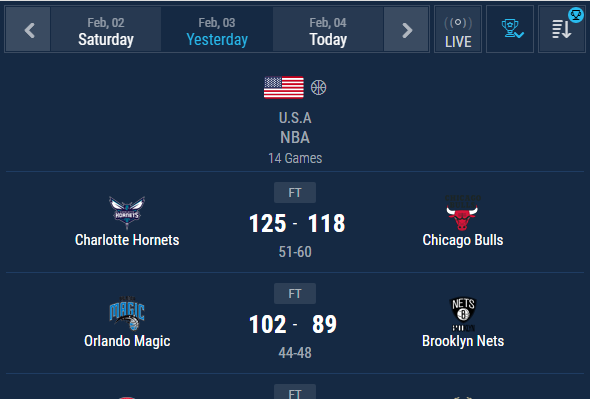In today’s digital age, sports enthusiasts expect real-time updates, instantaneous data, and seamless experiences, whether they’re watching a game live or following it from a mobile device. The fast-paced nature of modern sports, with its unpredictable twists and turns, makes live score technology an essential part of the viewing experience. It allows fans to stay engaged with their favorite teams and athletes, regardless of their location, and is key to revolutionizing how we experience sports. But how exactly does live score technology work? What’s the technology behind the real-time updates we see on our screens?
In this article, we’ll explore the mechanics of live score technology, its evolution, and how it has transformed the sports industry. From the technology that powers scoreboards to the infrastructure behind mobile apps, live score technology is much more than just displaying numbers on a screen—it’s a sophisticated system that collects, processes, and distributes data in real time.
The Evolution of Live Score Technology
The history of live score tracking can be traced back to the early 20th century when radio broadcasts and printed media began offering sports scores to the public. However, the true revolution in live score technology began in the 1990s and early 2000s with the advent of the internet and mobile phones. Early sports websites offered basic score updates, but as technology advanced, so did the demand for faster, more accurate information.
- Television: The addition of on-screen graphicsand ticker-style updates brought live scores into the living rooms of millions, allowing fans to track games without being glued to their TV sets.
- Mobile Apps: The rise of smartphones brought live score updates into the hands of fans everywhere. The introduction of apps like Cricbuzz, ESPNcricinfo, and Yahoo Sportsallowed users to follow live scores, player statistics, and breaking news at the touch of a button.
- Wearables and IoT: In recent years, wearable technology and the Internet of Things (IoT)have also played a role in improving live score technology by collecting real-time data on player performance, movement, and environmental conditions, which feed directly into live scoring systems.
The combination of internet connectivity, mobile technology, and advanced data systems has allowed live score technology to evolve into what it is today: a critical part of sports broadcasting, fan engagement, and the overall viewing experience.

How Live Score Technology Works: The Technical Behind-the-Scenes
Understanding the technical backbone of live score technology requires a closer look at the infrastructure, sensors, data collection, and software systems that work together to deliver accurate, up-to-date scores. Here’s a breakdown of how it all works:
1. Data Collection: Sensors, Cameras, and Wearables
The first step in the process is the collection of data. To provide live scores, sports events rely on various forms of data acquisition, from sensors placed on the players and the equipment to cameras capturing the action on the field.
- Smart Stadiums: Many modern sports venues are equipped with advanced sensor networksand cameras that track player movements, ball trajectories, and other key metrics in real time. For example, in cricket, Hawk-Eye technology is used to track the trajectory of the ball and make accurate predictions about its path, such as whether it would have hit the stumps in a review situation.
- Wearable Technology: Athletes today often wear smart devices(e.g., GPS trackers, heart rate monitors, motion sensors) during games, which provide data on everything from player speed to fatigue levels. This data can be integrated into the live score system to offer deeper insights into player performance.
- Official Scorekeepers and Data Collectors: For more traditional sports like football or basketball, data is also collected by official scorekeepersand data collection teams who record every key moment, from goals and wickets to fouls and runs.
2. Data Transmission: Instant Connectivity
Once the data is collected from the sensors, cameras, and scorekeepers, it needs to be transmitted to the system that will process and display it. This is where instant connectivity comes into play.
- Real-Time Data Feeds: The data from the stadium or arena is transmitted in real timeto centralized servers using high-speed internet The information travels through fiber optic networks, satellite links, or 5G connectivity to deliver data to media outlets, apps, and websites with minimal latency.
- Cloud Computing: Cloud-based technology is used to process and store vast amounts of data coming in from live sports events. This enables scalabilityand ensures that systems can handle high levels of traffic during major events like the World Cup or Super Bowl, where millions of fans are following live scores simultaneously.
3. Data Processing: Algorithms and Software
Data processing is the core of live score technology. Once the raw data is transmitted to the system, it is processed by advanced algorithms and software platforms designed to update scores in real time. These algorithms can interpret data from a variety of sources (sensors, cameras, and scorekeepers) and update the scoreboards accordingly.
- AI and Machine Learning: Modern live score systems often incorporate artificial intelligence (AI)and machine learning to predict outcomes and ensure that scores are updated quickly and accurately. AI-powered systems can analyze patterns in gameplay, providing real-time insights into player and team performance.
- Predictive Analysis: In some cases, AI systems can even predict the likely outcome of a match based on data from previous games, player form, weather conditions, and other factors. This is especially useful for sports analytics platforms that go beyond live scores and offer predictions, player rankings, and strategic insights.
4. Displaying the Data: User Interfaces and Mobile Apps
The final step in the process is displaying the live scores to users. Once the data has been processed, it’s sent to various platforms, such as websites, mobile apps, and stadium scoreboards.
- Mobile Apps: Apps like Cricbuzz, ESPNcricinfo, and Yahoo Sportsreceive live score data and display it to users in a user-friendly format. Fans can check the current score, ball-by-ball updates, and detailed match stats through intuitive interfaces.
- Websites: Online platforms feature live scoreboards that update continuously as the game progresses. In addition to scores, these platforms may provide rich media content like live commentary, player stats, and video highlights.
- Stadium Scoreboards: On-site stadium scoreboards display live scores, player stats, and game information for fans in the stadium. These scoreboards are usually integrated with the stadium’s sensor networks and rely on similar technology used by mobile apps and websites to keep fans updated.
5. Push Notifications and Alerts: Keeping Fans in the Loop
Another important aspect of live score technology is push notifications. Many sports apps and websites offer fans the ability to set alerts for key moments during a game, such as a goal, wicket, or score milestone.
- Push Notifications: Once a significant event occurs, such as a player scoring a century or a wicket falling, fans receive a notification with the updated score or a brief summary of the event. This allows fans to stay up-to-date even if they’re not actively following the game.
- Personalized Alerts: Fans can personalize their experience by receiving notifications about specific players, teams, or events. For example, a cricket fan might want alerts when their favorite batsman is about to take the field or when their team wins a match.
The Future of Live Score Technology
As technology continues to advance, live score technology will only get more precise, faster, and immersive. Some exciting developments to watch out for include:
- Augmented Reality (AR) and Virtual Reality (VR): In the future, live scores could be integrated into AR and VR experiences, allowing fans to interact with scores, stats, and match data in real time during immersive experiences.
- 5G and Edge Computing: With the rollout of 5G networks, the speed and efficiency of live score updates will dramatically improve. Edge computingwill also help reduce latency, delivering faster updates to fans around the world.
- Enhanced Analytics: Real-time player tracking, advanced predictive analytics, and AI-based insights will continue to refine the live score experience, offering fans a deeper understanding of game dynamics.
Conclusion: The Power of Live Score Technology
Live score technology is a crucial component of modern sports, allowing fans to stay connected to the action, regardless of where they are. The process involves the collection, transmission, processing, and display of data in real time, utilizing a range of technologies from sensors and cameras to AI algorithms and cloud computing. As the technology evolves, it will continue to provide fans with faster, more accurate, and more engaging ways to experience sports. Whether you’re watching a match from the comfort of your home or on the go, live score technology ensures you never miss a beat!


